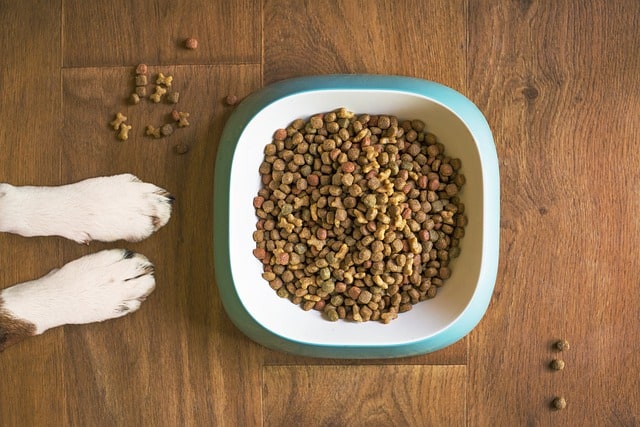
Here is some important information that will help you choose the best diet for your dog.
There are several types of dog food available on the market. Now, has it always been like this? Have dogs kept their diet since they became a part of human life?
Our understanding of dog nutritional needs has changed a few times over the course of human and dog shared history, mainly due to the advancement of science.
The knowledge and quantification of the daily nutritional needs that dogs have has progressed and with it it has been possible to deepen many aspects and improve others. Thanks to this, today, when it comes to feeding our pet, we have several options available that can benefit both its proper development and its well-being.
A long commitment to good nutrition
From weaning, which takes place between 7 and 9 weeks of age, dog guardians are required to provide adequate food.
We must bear in mind that the needs vary according to the stage of development. In general, we must:
- In puppies the energy and nutritional needs are greater than in adults, due to their rapid growth.
- Depending on the stage in which the adult dog is, the needs may be different, in this sense aspects such as pregnancy, lactation, old age must be considered.
- Needs are also influenced by the dog’s health, size and breed.
Proper diet helps prevent multiple health problems. For example, those that can affect bones or skin, as well as improve the health and physical appearance of the animal. In relation to the above, we must decide whether we want to provide a home- made diet or an industrially formulated diet .
Types of dog food, based on their quality
Commercially, there are three types of dog food:
- Commercial or standard.
- Premium.
- Super premium.
Commercial or standard foods are marketed through the supermarket chain. The formulas are variable (the quality of the ingredients and the source can vary) and generally have a lower digestibility than a premium food .
Some low-cost dog foods rely primarily on grains and other plant- based proteins . Commonly, soy is used as a protein, but while it provides benefits, it can also cause flatulence or allergies.
While these products can be attractively priced, many breeders prefer animal proteins and believe they are better for taking care of their dogs’ health. Premium foods use better quality ingredients, offer greater digestibility and good to excellent nutrient availability.
Therefore, there are those who prefer this option to standard foods. On the other hand, super premium foods are developed to provide optimal nutrition. They have excellent availability of nutrients and greater digestibility. In addition, they contain higher quality ingredients than the premium type , are more expensive, and are only sold in veterinary clinics.
How to make a smart purchase?
Before buying it is important to read the composition label: the ingredients are listed in order of quantity. So, the first is the most present and so on.
Another factor to consider is the percentages, it is normal for some brands to break the grain content in two so that it seems lower. As for the protein composition, it is advisable to make sure that the ingredient that appears – be it meat or fish – is dehydrated .
This is important because the wet weight of the meat includes the water content, which reaches 60-70%, which dilutes the final protein content .
Types of dog food, based on their moisture content
Basically, dog food comes in three types: dry, semi-moist and wet (canned).
- Dry food. The feed contains a low moisture content with values between 3 and 11%. It has an average of 17-25% protein, 7-12% fat, 35-50% carbohydrate.
- Semi moist food . It has an intermediate moisture content between dry and wet, which normally varies between 15 and 35%, contains 17-25% of proteins, 6-12% of fats and 35-50% of carbohydrates.
- It is made with fresh or frozen animal tissues, cereals, fats and simple sugars. It uses humectants and is acidified with simple organic acids to allow it to last longer.
- Wet food . These foods are commonly canned , have a high moisture content of between 75 and 87%, their protein content is 7-9%, 3-9% fat and 2-13% carbohydrates and their digestibility fluctuates between 80 and 85%.
- This type normally provides the same nutrients as the feed, but has greater acceptance by the dog, given its greater palatability.
The BARF diet
BARF stands for Biologically Appropriate Raw Food . It is a type of food that tries to recreate the dog’s natural diet .
In nature, a dog might eat raw prey (other medium-sized animal species), fruit, berries, herbivore manure, and carrion. The diet includes serving the portion of the muscles, including the internal organs and bones . It also includes fish or poultry, unpasteurized milk, and raw eggs.
Raw meat diets can be divided into 2 main categories: commercial and homemade. The main reason given by several organizations to oppose BARF feeding is that possible pathogen contamination of raw meat causes health risks. A very real risk in case of salmonellosis.
Furthermore, no reports have been published on the long-term assessment of the risks and benefits of these types of diets. Lack of consensus and paucity of scientific data are one of the biggest challenges for veterinarians when it comes to giving (or not) recommendations.
What is known is that dogs need to maintain a balanced diet to get the energy they need, day in and day out. As guardians, we have a duty to properly feed our dogs.






